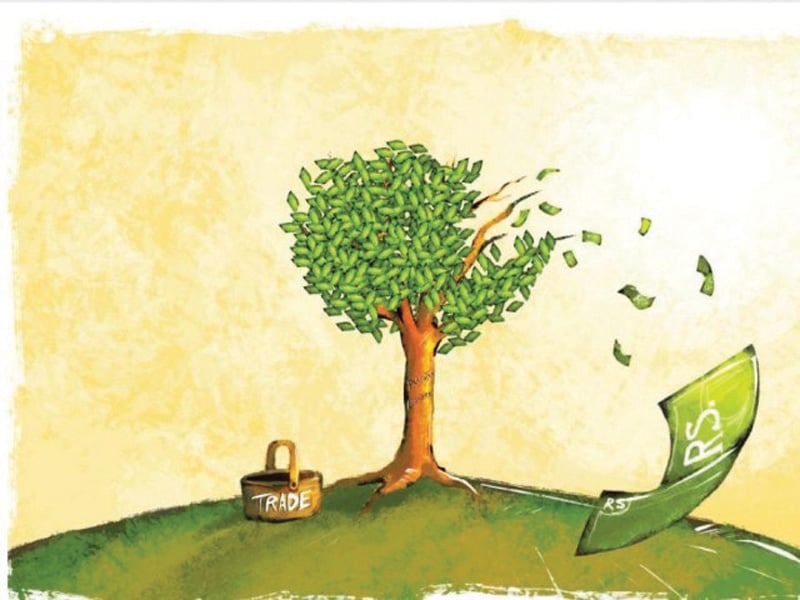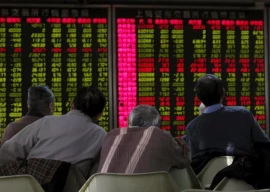
Recession is a new buzz word in every other drawing room. The educated, the salaried, the retail shopkeepers, the industrialists and the blue collar all are worried about the onslaught of an upcoming recession.
Most link it to the rising commodity prices, particularly the prices at petrol pumps, and some link it to the uncontrollable PKR depreciation over the past many weeks. Some comment that the Russia-Ukraine war and the fight to become the super power is plunging the world into a state of supply glut and demand reduction.
This environment is more a testing time of nerves. For a commoner, the challenge becomes twofold. Primary inflows tend to stagnate and the secondary source of income fizzles out.
Cost pressures continue to mount as prices spiral due to the input price hike coupled with supply line congestion. As recession deepens, we may see a reduced level of consumption, especially towards consumer products, resulting in potential job losses.
Keeping in view the current economic fundamentals, how should an investor plan to allocate his funds is one of the pertinent thoughts.
A prudent person with cash flows higher than his current consumption and free assets available for investment needs to take a deep dive to identify how to tread forward in these times of dire volatility.
My thought process would be to take a hard and tough review of the portfolio and undertake the following activities:
De-risking the portfolio
One of the first steps that one needs to take is to ensure that the portfolio is clear of any toxic assets. Assets that create MtM cause undue volatility in the existing portfolio, which in slow and recessionary periods continue to erode the portfolio value at an undesired pace.
An essential step is to deleverage the existing portfolio and clear the books of any unwanted risk.
Avoid obsession with revaluation
Due to the prevailing uncertainty across the globe and specifically within the country, there would be large swings with prices moving in both directions.
Revaluing the portfolio frequently and tracking its value results in unwarranted stress and would cloud the decision-making process. This is not to downplay the value of investment timing.
Timing the investment
A thoughtful review of the asset and asset classes needs to be undertaken to identify the short-term and long-term economic, political and financial situation. This would help build up a path of how prices would move and help in averaging out the investment outlay.
Portfolio bifurcation
A deep thought needs to be undertaken by the asset holder to evaluate his needs for funds. In these testing times, I would look into bifurcating the portfolio into the following key portions:
Emergency funds: This is the kitty that helps cushion the pressure on the standard of living due to any untoward incident, causing a drop in income levels or due to any unwarranted increase in spending caused by price hikes.
These should be invested in highly liquid assets that offer consistent returns, simulating the fixed-income portfolio.
The aim should be to have three to six months of living expenses held in this liquid assets portfolio to ensure one has a solid emergency fund in existence. Worth noting is that the “Cash is King” during recessionary periods and one needs to remain liquid.
Long-term portfolio: Of the remaining assets, funds should be equally divided into long-term portfolio and opportunistic portfolio.
The long-term portfolio should be chosen carefully and assets should be cherry-picked based on their future potential rather than undervaluation. The time horizon under consideration for holding the assets should be between five and eight years.
Be ready to see lower valuations in these assets during the first few months but one should keep an eye out for the long-term potential instead.
Look at building a portfolio of defensive stocks as they tend to be insulated from ups and downs. Healthcare, utilities and consumer staples tend to remain stable across a business cycle as they have a low beta. Follow an averaging policy and keep an eye on the quality of assets.
Opportunistic portfolio: During this period, a multitude of assets would look cheaper and a greater number of assets/ securities could become cheaper than today.
Generating alpha in this period requires an aggressive and continuous monitoring of a select group of assets. The game plan is to first conduct a dispassionate review of the various categories of assets and narrow them down to certain key assets that one has a liking for.
Post the short-listed, as the game is in timing the investment right and identifying the pullback. The effort one puts in is in trying to pick them near the bottom and exit them before the pullback loses steam.
Assets tend to move in waves, especially during the recessionary period, and the thought process is to ride the curve.
Don’t overreact
Be prepared for a rocky ride. Avoid knee-jerk reactions both on the buying and selling sides of assets with a view to riding out the inevitable bumps. One of the reasons for reducing trading is to avoid extra costs.
Instead of taking sudden steps to change lifestyles to increase savings, drip feed your saving account and make slow but sustainable changes. These will help not only in the challenging times leading up to and during recession but would also help later on.
While recessions can be challenging for returns and growing wealth, we would also see countercyclical rallies as the market turns back to its natural state of forward looking.
The key is to remain invested, not be whipsawed by short-term market gyrations, and to stay focused on your long-term goals.
Create safety nets and emergency funds but ensure that the cost of creating those nets stands low. Stay positive as recessions and downturns don’t last for long.
Looking in the rear view mirror, it is observed that most recessions have been over in nearly less than half a decade. So hang in there and remember that the “best of opportunities are typically found in difficult environments”.
The writer is a student of behavioural finance, a treasury and wealth management professional and a visiting faculty at IBA
Published in The Express Tribune, November 14th, 2022.
Like Business on Facebook, follow @TribuneBiz on Twitter to stay informed and join in the conversation.





















COMMENTS (2)
Comments are moderated and generally will be posted if they are on-topic and not abusive.
For more information, please see our Comments FAQ